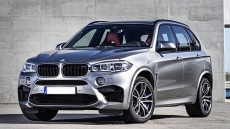The second generation Audi Q7 will soon be finding its way into local dealerships. The luxury crossover receives a redesign for the first time since the vehicle’s introduction in 2006, and it’s a major overhaul.
“What has changed about the Audi Q7? Absolutely everything,” says Brad Beckett, general manager at OpenRoad Audi Vancouver where a launch event was held in December 2015 to give Vancouverites a sneak peak of what’s to come.
“This is revolutionary change,” says Beckett, adding the manufacturer, through learning gained from the nine years of producing the previous model, has developed an SUV that is more than 320 kilograms lighter than before.
The enormous weight savings is a big talking point of the new Q7 due to the fact that shedding mass increases performance on every level, lowers fuel consumption, and simply because accomplishing such a task is no easy feat – especially on a luxury vehicle chock full of creature comforts – given today’s stringent safety regulations. So how did they do it?
For starters, the underlying platform is no longer shared with the chunky Volkswagen Touareg and Porsche Cayenne, designed for off-roading rather than city commuting. Then, like Ford has heavily advertised on their revised F-150, gratuitous amounts of aluminum have been used to make up the fenders, doors hood, tailgate, suspension, and other areas. In addition, Audi has utilized smarter and more efficient engineering processes in building the transmission and electronic systems.

Aside from the weight loss, Beckett also talked about the Q7’s “progressive design.” With its exaggerated iconic Quattro-inspired wheel arch flares, the full-size CUV has a dominating physical presence and looks every bit as large as the outgoing vehicle, yet is actually shorter by 37 millimetres and 15 mm narrower. Rejigging the interior layout has allowed the retention of the same amount, if not slightly more, interior space.
Taking inspiration from the TT, arrowshaped LED daytime running lights give the front end an instantly recognizable signature look, and inside, the Audi Virtual Cockpit gives drivers access to an array of customizable information.
Power is provided via two 3.0-litre sixcylinder engine choices: a 333-horsepower TFSI gasoline engine and a 272 hp diesel pumping out 443 lb-ft of torque, handled by an eight-speed automatic gearbox and Quattro all-wheel drive. Thanks to better aerodynamics and the lighter body, fuel economy has improved in the neighbourhood of 28 percent and the TFSI-equipped Q7s are said to be able to dash from 0 to 100 km/h in less than six seconds.
While the new Audi Q7 may no longer be a Porsche Cayenne in disguise, there is still available equipment that can give it some off-roading pretensions. An optional air suspension can lower the ride height up to 30 mm when cruising along the highway, or raise the height up to 60 mm when traversing large puddles or rock-covered surfaces.
Canadian MSRP has not yet been announced. Check www.audi.ca for more information.

